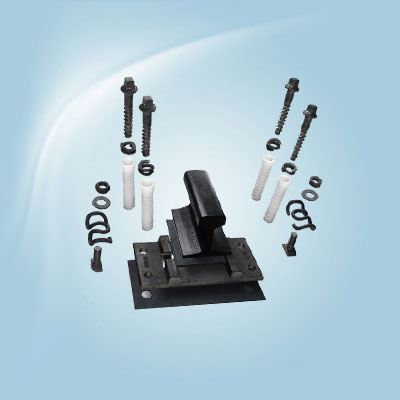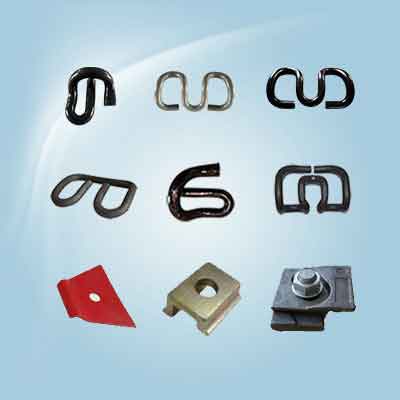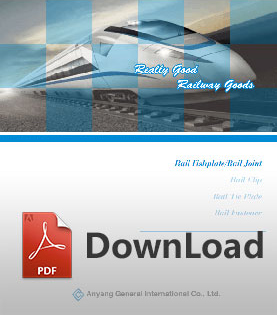It's All About Types of Rail Joint
Jun 15, 2018

This is an informational post, please check the rail joint page if you are searching for the product.
Rail joint, also called rail fish plate or joint bar, is one of several railway components. It takes on the task of connecting two rails and usually installed with fish bolt and nuts. Rail joint is one of the weak links in the whole railway track structure. So how to install rail joints and how to perform routine maintenance are particularly important. Before that, we need to figure out what is rail joint and how many different types of rail joint. Today, we will discuss the second one-- How many different types of rail joints.Three Factors Affecting Classification
In various kinds of rail joints, we divide them roughly into three categories according to the position of railway sleepers, the position of rail joints and the performance of rail joints. Next, I will share you more details about the three categories.
♦ Based on the Position of Sleepers
Under this category, we can still subdivide it into suspended rail joint and supported rail joint.
Suspended rail joint
In this type, rail joints are suspended between two sleepers. It has good stress condition, simple structure and it is easy to maintain. While the shortcoming of this joint is the fish plates are easily broken, as the fish plate is under greater pressure due to the rail deflection after wheel rolling. Therefore, in order to solve this problem, we need to reduce the space between sleepers to increase the flexural resistance of the joints. Although this type of joint is not perfect it is the most widely used one in railway construction worldwide.
Supported rail joint
This kind of rail joints is placed directly on the sleepers. According to the number of sleepers, we can still divide it into:- Single-sleeper supported rail joint
- Double-sleeper supported rail joint.
The latter has two sleepers under the rail joint. They help to disperse more impact force for joint. At the same time, the sleeper is a flexible support. There is a small seam between it and the rail joint. So it also has rail deflection but very small. The pressure on the joint is relatively small, too. But unfortunately, this kind of joint has high rigidity and difficult to tamp.
♦ Based on the Position of Joints
There are also two types included in this category. The first one is the square joint and the second one is staggered joint.Square joint
Rail joints on one track are exactly opposite to the joints on the other side are called square joints. This kind of joint is suitable for the straight rail line,and the rail line can be laid mechanically section by section. When trains passed through, the opposite two joints bear the impact force at the same time. It reduces the number of hits to the rail track. The running of the train will be more smoothly. At present, such joints are commonly used on railway lines.Staggered joint
In this case, the distance between two opposite joints staggered half a rail. It mainly applies to the curved rail line and will disperse the impact force from wheel rolling, but it is not good for stability.♦ Based on the Performance of Rail Joints
The third category is based on the performance of rail joints. Under this category, we subdivided it into standard rail joint,compromise rail joint,conducting rail joint,insulated rail joint and welded rail joint.Standard rail joint
It is the most basic rail joint. The rails it connected are having same weight and length. There will be an 8-10mm seam left between two rails for expansion and contraction, but the seam will cause the damage to rail and track bed in the joint area. Therefore, we usually replace it with welded rail joint.
Compromise rail joint
It is mainly used to connect two different types of rails to make sure the continuity of railway. Under normal conditions, in order to make the top surface and the inner side head of rails are matched up, it will use the corresponding special-shaped rail joint and rail pad with it.Conducting rail joint
This joint is regarded as a connector used for conducting track current or as a traction current circuit, usually applied to automatic block and electric traction area.Insulated rail joint
This kind of joint adopts insulating material to prevent current conduction between two adjacent automatic block sections. For insulation purpose, we will use nylon rail track bolt sleeve and nylon rail joint to separate rail, joint and bolt.Welded rail joint
In this type, the end of rails is welded together to form a continuous long rail by resistance welding, small pressure welding or aluminum hot welding. The end of rails does not need to drill bolt hole and this rail joint is mostly used for seamless lines.Above is the classification of rail joints. Each one has its own advantages and disadvantages. Hope this article will help you to find the most suitable rail joint.
You may also like:
CATEGORIES
- Rail Fasteners
- rail fastening system
- rail clip
- railroad spike
- Track bolt
- rail shoulders
- rail anchor
- rail clamp
- tie plate
- Rail Pad
- rail insulator
- rail plastic dowel
- other rail fasteners
- Railway Switch
- SKL series rail fastening system
- Chinese standard rail fastening system
- screw spikes
- Crane rail fastening system
- K type rail clip for Africa
- Hey-Back Rail Fastening
- rail fasteners for Mexican market
- Ss25 screw spike
- Ss35 rail sleeper screw spike
- Ss8 screw spike
- coach screw
- Crane Rail Clip
- Rail Joints (Fishplate)
- Steel Rail
- Railway Sleeper
Hot Sale Products
rail fastening system
 rail clip
rail clip
 rail joints
rail joints

Product Brochure
Product Brochures,Instant FREEDownload
We Respect Your Email Privacy,We Hate Spam As Much As You Do!
 Español
Español English
English
